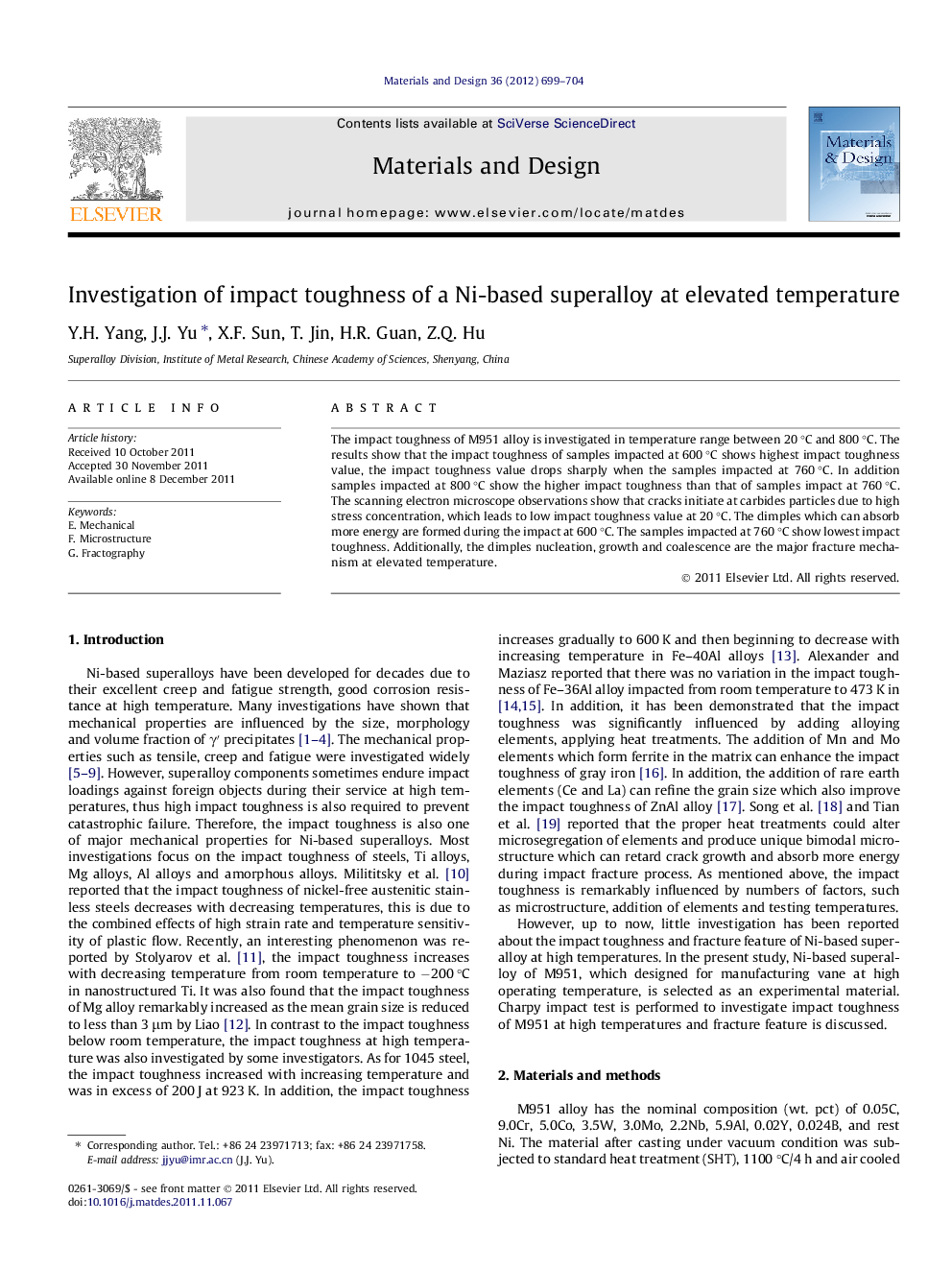| Article ID | Journal | Published Year | Pages | File Type |
|---|---|---|---|---|
| 830899 | Materials & Design (1980-2015) | 2012 | 6 Pages |
The impact toughness of M951 alloy is investigated in temperature range between 20 °C and 800 °C. The results show that the impact toughness of samples impacted at 600 °C shows highest impact toughness value, the impact toughness value drops sharply when the samples impacted at 760 °C. In addition samples impacted at 800 °C show the higher impact toughness than that of samples impact at 760 °C. The scanning electron microscope observations show that cracks initiate at carbides particles due to high stress concentration, which leads to low impact toughness value at 20 °C. The dimples which can absorb more energy are formed during the impact at 600 °C. The samples impacted at 760 °C show lowest impact toughness. Additionally, the dimples nucleation, growth and coalescence are the major fracture mechanism at elevated temperature.
► The samples show highest impact toughness at 600 °C. ► The impact toughness of samples impact at 760 °C drops sharply. ► The voids nucleation and growth are fracture mechanism at elevated temperature. ► The decrease in strength of grain boundaries causes reduction in impact toughness.
